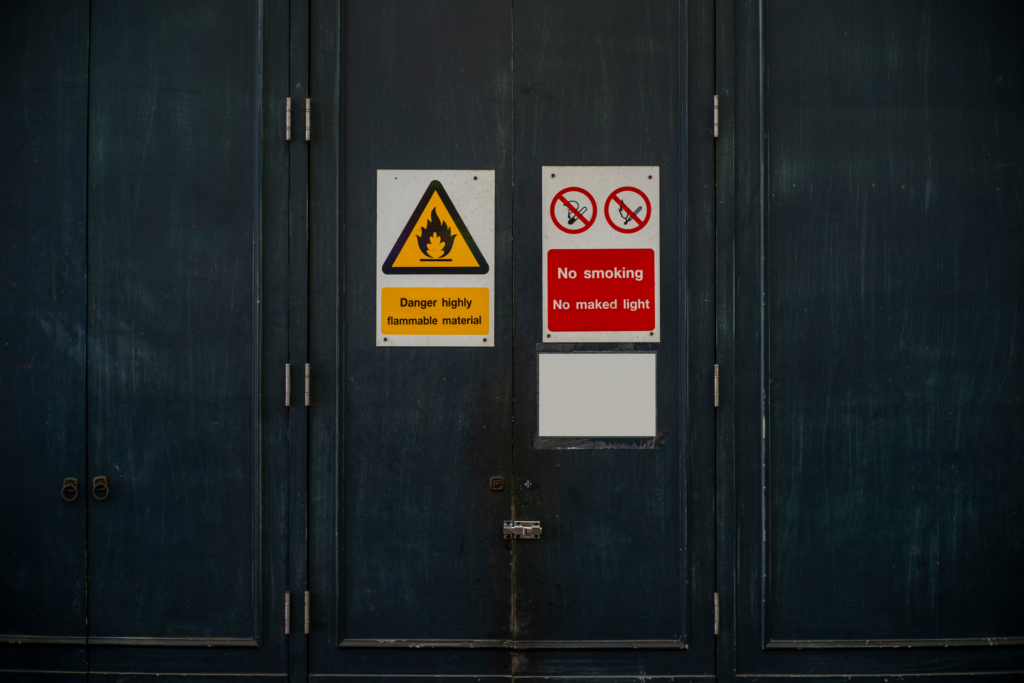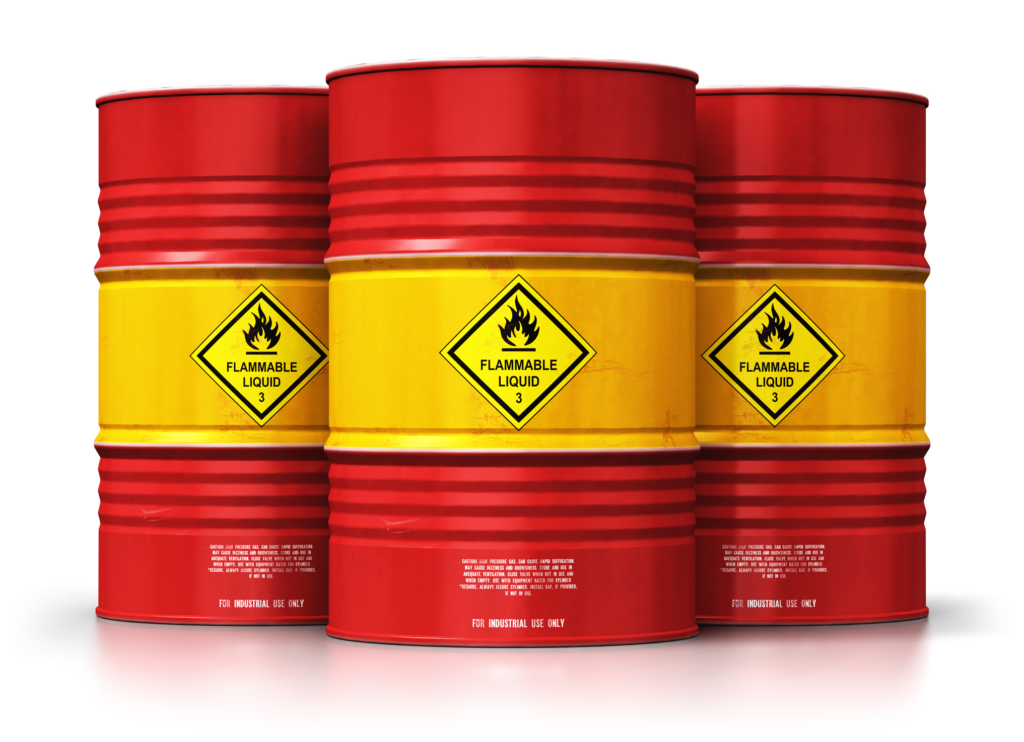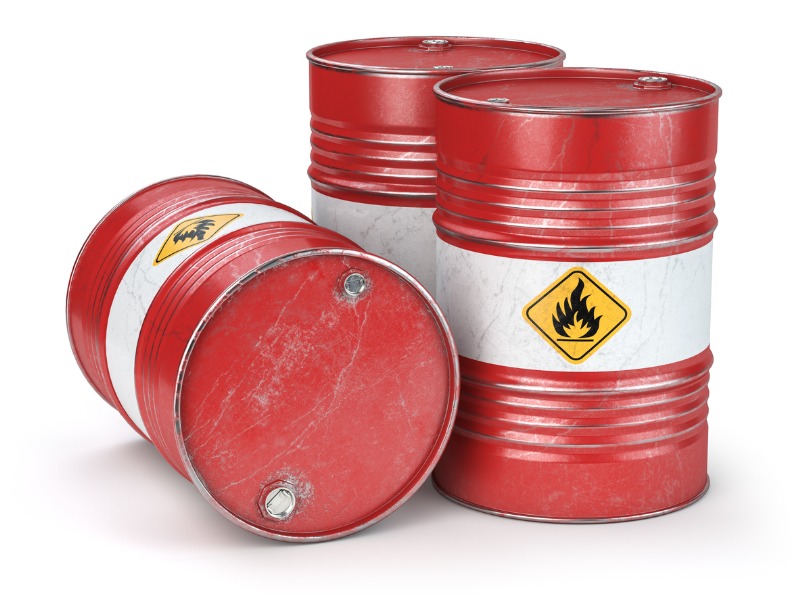What You Must Know About Flammable Liquids Handling and Storage
Over the past 200 years, the use of non-water-based chemicals has increased significantly. Naturally, exposure to the hazards associated with these chemicals, particularly in workplaces, has also increased. It is estimated that flammable or combustible liquids cause more than 51,000 home fires each year, resulting in 168 deaths. So, one potential hazard is flammability. So, to prevent fires, hazardous liquids require special precautions in storage, handling, and use. The National Fire Protection Association (NFPA) has developed guidelines for the safe storage and use of flammable liquids.
These guidelines are not mandatory unless a federal, state, or local authority chooses to adopt them. However, the Occupational Safety & Health Administration (OSHA) has developed mandatory regulations for flammable liquids. As capable and responsible employees, it is crucial for General Industry employees to become well aware of potential site hazards such as workplace hazard recognition, explosive chemicals, and flammable liquids.
Individuals who work with these materials can enroll in flammable liquid safety course and learn to avoid mishaps and keep themselves safe in their jobs.
OSHA requirements include the following:
- General industry (29 CFR 1910.106)
- Construction industry (29 CFR 1926.152)
- Shipyard industry (29 CFR 1915.36)

Defining Flammable Liquids
In addition to the danger of fire, flammable liquids may themselves present a health hazard. So this can occur at air concentrations well below those needed to create a fire hazard. So, to understand OSHA requirements for the safe storage of flammable liquids, we must first categorize them. The flashpoint and boiling point also determine the category of such liquids. So, the flashpoint is the minimum temperature at which a liquid gives off enough vapor to form an ignitable mixture with air near the surface of the liquid. So they have a flashpoint at or below 199.4°F (93 °C). Their categories are:
- 1 Category: Liquids with flashpoints below 73.4°F (23°C), but boiling points at or below 95°F (35°C). Examples include acetaldehyde and ethyl ether.
- 2 Category: Liquids with flashpoints below 73.4°F (23°C) and boiling points at or above 95°F (35°C). Examples include acetone, benzene, and toluene.
- 3 Category: Flammable liquids with flashpoints at or above 73.4°F (23°C) and at or below 140°F (60°C). When you heat such liquids with a flashpoint at or above 100°F (37.8°C) for use to within 30°F (16.7°C) of its flashpoint, you must handle it in accordance with the requirements for such a liquid with a flashpoint below 100°F (37.8 °C).
- 4 Category: Liquids having flashpoints above 140°F (60°C) and at or below 199.4°F (93°C). When you heat such a flammable liquid for use within 30°F (16.7°C) of its flashpoint, you must handle it in accordance with the requirements for a 3 Category fluid with a flashpoint at or above 100°F (37.8°C). When you heat a fluid with a flashpoint greater than 199.4 °F (93 °C) for use to within 30 °F (16.7 °C) of its flashpoint, you must handle it in accordance with the requirements for such a flammable liquid.

Flammable Safety Cans
One tool to help reduce the hazards associated with flammables is the use of safety cans. According to OSHA requirements, a safety can is:
“An approved container, of not more than 5-gallons capacity, having a spring-closing lid and spout cover and so designed that it will safely relieve internal pressure when subjected to fire exposure”
So, this definition allows a wide variety of containers to be classified as safety cans. However, many local laws and insurance carriers require safety cans to be approved by Factory Mutual (FM) or Underwriter Laboratory (UL). These two organizations are nationally recognized. They also have independent testing laboratories where manufacturers submit products to evaluate their ability to meet safety requirements for flammable liquids. Products that meet the requirements are given either an FM or UL approval. Both laboratories are also recognized by OSHA.
Additionally, OSHA requirements limit the maximum size of containers and portable tanks for flammable liquids. The following chart shows the allowable amounts for each category of liquid.
| Container Type | Category 1 | Category 2 | Category 3 | Category 4 |
|---|---|---|---|---|
| Glass or approved plastic | 1 pint | 1 quart | 1 gallon | 1 gallon |
| Metal (other than DOT drums) | 1 gallon | 5 gallons | 5 gallons | 5 gallons |
| Safety Cans | 2 gallons | 5 gallons | 5 gallons | 5 gallons |
| Metal Drum (DOT specifications) | 60 gallons | 60 gallons | 60 gallons | 60 gallons |
| Approved portable tank | 660 gallons | 660 gallons | 660 gallons | 660 gallons |
By obtaining OSHA 30 certification, workers can correctly identify, control, and prevent site hazards related to flammable liquids. Approved containers and portable tank requirements exempt Medicines, beverages, foodstuffs, cosmetics, and other common consumer products.
Safety Cabinets
Another fundamental method of fire protection is the use of flammable storage cabinets. The NFPA and OSHA have certain design requirements for flammable cabinets. Manufacturers should design and construct storage cabinets to limit the internal temperature to not more than 325°F when subjected to a 10-minute fire test. They should also label the cabinets in conspicuous lettering, “Flammable – Keep Fire Away.” According to OSHA requirements, metal cabinets must be constructed in the following manner:
- The bottom, top, and sides of the cabinet must be at least No. 18-gauge sheet iron.
- Cabinets must be double-walled with one-and-one-half-inch airspace.
- Joints must be riveted, welded, or made tight by some equally effective means.
- The door must have a three-point latch.h
- The door sill must be raised at least two inches above the cabinet bottom to retain spilled liquid within the cabinet.
There are OSHA requirements for wood cabinets as well. Manufacturers should construct them as per the following specifications:
- The bottom, top, and sides of cabinets must be made of exterior-grade plywood, which is at least one inch thick.
- Plywood must not break down or delaminate under fire conditions.
- Joints shall be rabbetted and fastened in two directions with flathead wood screws.
- When more than one door is used, they must have a rabbetted overlap of not less than one inch.
- Hinges must be mounted in such a manner so as not to lose their holding capacity due to loosening or burning out of the screws when subjected to fire tests.
Conclusion
Proper handling and storage of flammable liquids are critical for workplace safety. Following OSHA guidelines and using approved containers and safety cabinets significantly reduces fire hazards. Educating employees through safety courses helps recognize and mitigate risks, Which ultimately creates a safer work environment.







